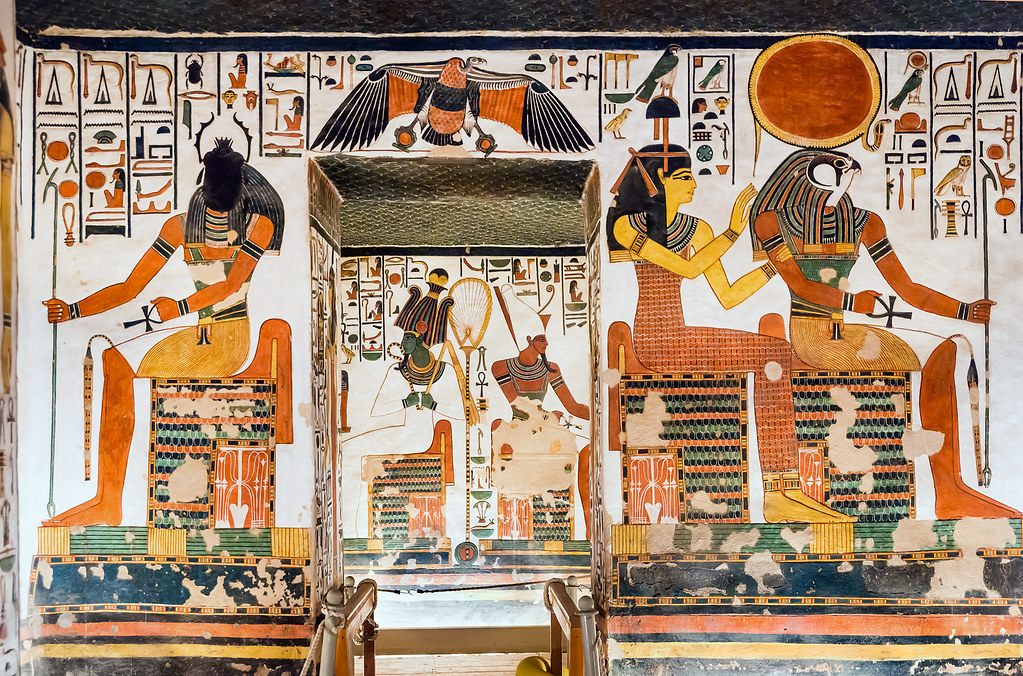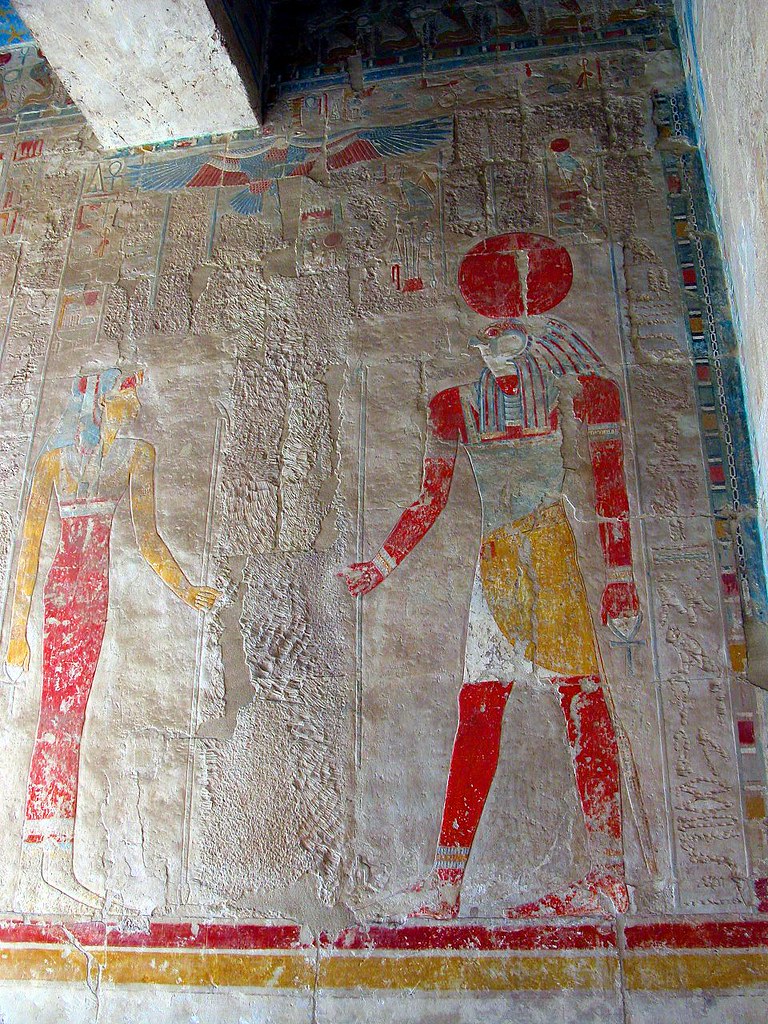"Hail to you Ra, perfect each day. – Litany of Ra II 87"
Out of the myriad of gods the ancient Egyptians worshipped, the great sun god Ra would be a strong contender for the god they held to be the most important deity. He was so important that the Egyptians often merged him with other deities such as Ra-Horakhty (Ra + Horus) He is first attested as the name of Raneb 2865 BCE. Ra became so important that, during the 4th Dynasty, Pharaohs began using "Son of Re" as a title.

Ra-Horakhty with Hathor are pictued seated to the right : Tomb of Nefertari, QV66, Valley of the Queens |
During the early ages of the earth, RA ruled until he became too old to reign on Earth. Nun then ordered Nut to transform into a cow and raise RA up into the sky. Nut became the sky and Ra became king of the heavens. Ra is the word for sun, and the sun is the body of Ra. Ra then began making his way across the great celestial ocean in his Mandjet or day barque and was accompanied by various deities including the pharaoh.
Each day Ra was seen crossing the sky, but at night Ra made the perilous journey through caverns beneath the earth. The Middle Kingdom Coffin Texts place an increased emphasis on this dangerous journey. While Ra’s barque journeyed through the underworld, he was protected by a multitude of deities and the ritual acts of the Pharaoh. During the journey, the forces of chaos would attack the barque. One of these ferocious creatures is a great serpent named Apophis, who was decapitated by the goddess Bastet in her role of the "Cat of Re" (Wilkinson, 2017, pp. 177–179). During his underworld journey, Ra is frequently depicted as a ram-headed man or scarab within a solar disk, residing in the cabin of the barque.
The New Kingdom Underworld Books link the fate of all deceased to Ra's sun voyage. The monring light awakens the living, and the passing sun god reanimates the mummies of the virtuous dead. This solar mythology is often portrayed by depictions of Ra in different forms. The Khepri (scarab) form is the self generating sun of dawn, Ra-Horakhty is the triumpant sun, rising in the east as ruler. Ra-Atum is the weary, setting sun. This setting sun is death and part of the reneweal cycle.

Ra is pictured with a ram head in the cabin of his barque, Tomb of Sety I : Tomb of Nefertari, QV66, Valley of the Queens |

Ra at Deir El-Bahri : Egypt-4B-027 |
During the New Kingdom in particular, the fate of the deceased became linked to Ra’s sun voyage. The morning light awakens the living so the passing sun god reanimates the mummies of the virtuous dead. The sun also provided warmth, light and caused the growth of plants further cementing Ra’s importance to physical and supernatural existence.

